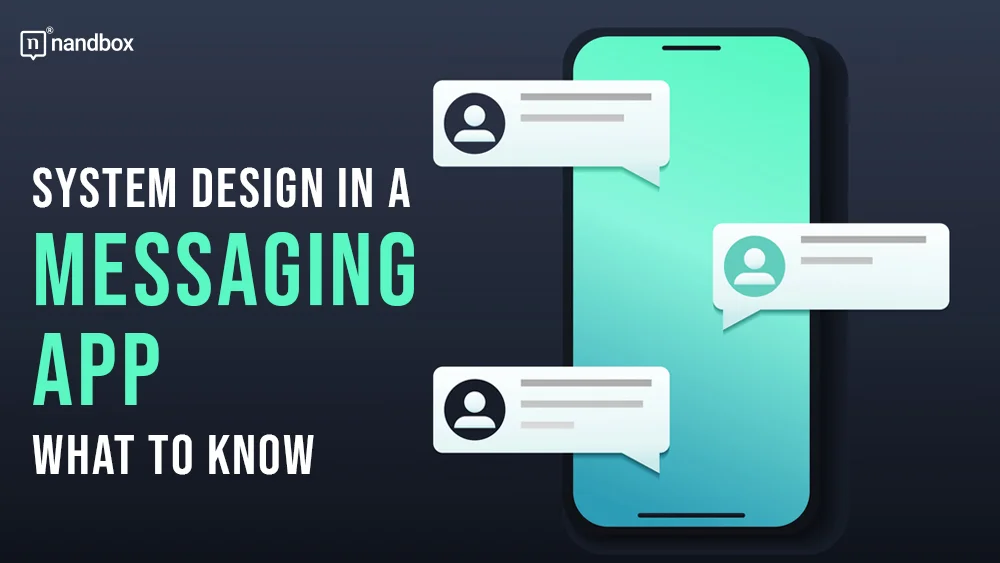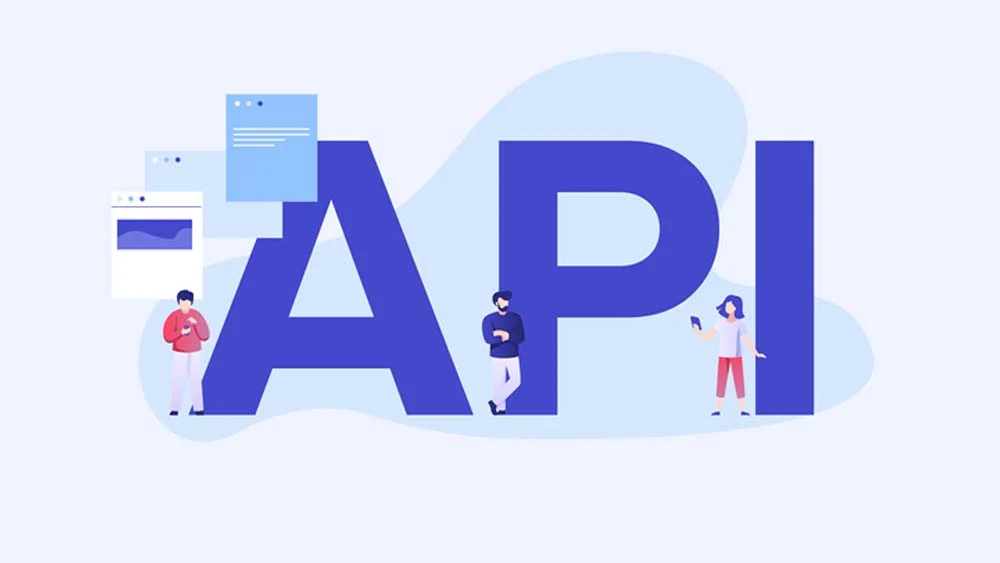The Role of System Design in Creating a Seamless Messaging App
Have you ever thought about how many messages you send via messaging apps per day? From what I can recall about how much I send, it has to be a large number. Well, especially on days with heated arguments. This number varies from one app to the next. So, the latest insights from WhatsApp Messenger state that there are 100 billion messages sent per day. If we narrow it down, that would be an average of 50 messages per day. Now, enough thinking about the number; let us think about the process for a while. Have you ever wondered how this number of messages go through to leave your phone in one country, cross oceans, and be delivered to another person in less than a second? What kind of amazing technology would this be? Easy; this is all due to the system design of a messaging app.
So, what exactly are system designs and what do they have to do with a messaging app? This is what we are going to find out. Read on to learn everything and the nooks and crannies about the system design of a messaging app and how you can create one for your application effectively.
Exploring The Exceptional Surge of Messaging Apps
Messaging apps or chat apps have been a must. They are tools that we can’t possibly imagine living without, although we have done it for many years. However, the many advantages messaging apps provide us with have transformed everything. Messaging apps witnessed an exceptional surge and became a fundamental part of the market in a short period of time. This is why, when mentioning the success of messaging apps in the app market, it is always described as instantaneous and remarkable.
Messaging apps highlighted many things that people lacked in previous means of communication. This is one of the factors that contributed to their success. For instance, they focused on being of an instantaneous nature; they highlighted functionalities that could make messages go back and forth in a matter of milliseconds. This addressed the major problems that people had with connectivity with methods like emails, messaging websites, and so on. Users suffered from inconsistent experiences with such methods.
The surge of messaging apps also occurred due to their versatility. These apps didn’t limit communication to texts only; people were also able to communicate through pictures, video calls, voice notes, and so on.
The rapid surge in the adoption of messaging applications is a testament to their usefulness and flexibility in meeting the demands of modern society and new technologies. The future of digital communication and engagement will likely be shaped in large part by messaging apps as they undergo continuous innovation and improvement.
What is System Design in a Messaging App?
Now, if we think about it for a while, there has to be a reason behind all the versatility and flexibility that made messaging apps this significant. And there is indeed a major reason behind this, which is a messaging app system design. But what is it exactly? A system design in a messaging app is the process of orchestrating the necessary components individually to create something like a full architecture or complex that makes communication between users possible. These components are put together like puzzles. This comes with a great emphasis on certain components and functions that highlight necessary attributes like flexibility, accessibility, and so on. A system design for a messaging app contains seven major sides that have to be present. These are client-side, server-side, data storage, message delivery, security, performance optimization, and APIs.
Each of these components that we will get to discuss later on is a living organ that a system can’t survive without. Any turbulence in any of these components will cause general instability and inefficiency in the whole system. This, as a result, can compromise the user experience and the whole app.
Importance of a System Design in a Messaging App
System design plays a pivotal role in the development and functionality of a messaging application, encompassing a multitude of aspects that ensure a seamless user experience, scalability, security, and overall efficiency. Below are several key areas highlighting the importance of robust system design in a messaging app:
Scalability
With a solid system design in place, the messaging app can scale to accommodate more users and messages without ever slowing down. The app can easily handle an increase in both users and messaging volume by utilizing scalable architectures like distributed systems or microservices. The scalability of the messaging app guarantees that it will continue to respond and be accessible, even during periods of high demand, which helps to avoid downtime and keeps users satisfied.
Performance Optimization
A messaging app’s efficiency in using resources and the speed with which messages are delivered are both affected by the system’s design. The database design, algorithms, network configuration, and load-balancing strategies are all carefully considered so that the system may minimize latency and optimize throughput. By minimizing latencies when delivering or receiving messages, performance optimization improves the application’s responsiveness and usability.
Reliability and Fault Tolerance
Designing a system with reliability and fault tolerance in mind reduces the likelihood of service interruptions and data loss. Messaging applications have multiple components. For instance, automated backup and comprehensive error-handling strategies. These strategies are needed to handle failures in the hardware, network downtime, and other unexpected situations. Users know their messages will always be sent reliably and the application will be available even when things go wrong. This reliability and resiliency inspire trust, which helps establish a loyal user base.
What are the Main Components of a System Design?
We can’t possibly understand the whole idea of a system design without illustrating the main components. So, let us get started!
Client-Side
Let us start first with the client side of the system. The client side is usually everything the user interacts with directly. So, for instance, the client-side includes the user interface, which has the elements that the user would communicate through, such as contact lists, chats, and so on.
The client-side also includes user security. It is a set of security measures needed to further enhance the security of user data and communication processes. User security measures include protocols like end-to-end encryption and authentication. This is, of course, in addition to the other security sets that we will explain later on that help secure the infrastructure itself.
Server-Side
Moving to server-side. The server side includes everything that happens on the dark side of the moon. And in a not-cool way, it is everything on the side that the user can’t see or interact with. All the methods included on the server-side aim to facilitate communication between users. It can include message routing, which is the process of planning the whole journey of a message from the moment it gets sent to the money it is delivered to the other recipient. Message routing also involves algorithms and functions like message queuing and load balancing.
Data Storage
The next component is data storage, which is possibly one of the most important components ever. Data storage is the process of incorporating technologies that help store, manage, and retrieve messages and databases. Message and data storage include using different types of databases, like SQL.
Another important part of data storage is user profile and metadata storage. Storing user profiles and metadata involves keeping track of details about users. This includes their contacts, group groups, and any other relevant metadata. SQL databases could be used to store this data. The choice of storage is dependent on the scalability requirements and the patterns of access.
We can’t also mention data storage without mentioning backup and data recovery. They are the top elements of any messaging app and system design. These strategies ensure the protection of user data in the event of any loss. This involves incorporating systems like disaster recovery plans to restore data in any case of failure.
Message Delivery
The fourth component of the system design of a messaging app is message delivery. The message delivery component is the core of communication between users in any messaging app. It involves a message queuing strategy. This strategy provides a reliable and asynchronous system that makes the exchange of messages seamless and instant. It also has delivery optimization, which prioritizes flow maximization and minimizes delays in message delivery.
Lastly, message delivery can’t be complete without notifications. Hence, including notification services is a must. Even when the app is not in use, users can still be alerted to new messages or updates through notification services using real-time notifications. This service can be provided by mobile platform push notification services or through custom notification systems embedded into the messaging infrastructure.
Security
To guarantee the privacy, authenticity, and accessibility of user information and conversations, the security component is vital. Several factors are considered by developers, including end-to-end encryption. End-to-end encryption, or E2EE, is an essential security feature used in apps. It locks messages on the device of the sender and only the device of the intended receiver may decrypt them. Another option is data encryption at rest, which encrypts user information and message data before it is saved on a server or database to prevent unauthorized access. In the case of server hacking or the actual theft of storage devices, this security measure prevents data breaches and unauthorized access to important information.
APIs
Oh, and let’s not forget about APIs. In the design of messaging systems, APIs are vital. They allow developers to create apps that take advantage of the messaging system’s features by providing standardized ways for different pieces of software to talk to each other. When it comes to messaging app system design, two APIs are typically involved: Websocket API and RESTful API
A RESTful API standardizes the way clients communicate with the messaging system’s server-side components. Some examples of these endpoints include those for sending messages, accessing message histories, and managing user profiles.
On the other hand, WebSocket APIs permit full, two-way interaction between servers and users over a single, continuous connection. WebSocket APIs are responsible for zero latency means of communication for interactive messaging apps, and they’re utilized for features like real-time chat, status updates, and push notifications.
How Can You Build a Messaging App Without Needing a System Design
Creating a system design for a messaging app can be quite challenging, given the many processes, components, strategies, and technologies involved. This, in turn, makes the development process of messaging app development a tough one to go through. But, luckily, with nandbox, you can create a messaging app without needing to create a system design. Let us tell you how!
The nandbox app builder, which is a renowned no-code building platform, has always emphasized the process of making a messaging app from the very start. This was what drove them to focus on the messaging features and technologies that users can use. At the moment, they have more than 5 communication features needed to craft the best messaging app. In addition, the nandbox app builder has all the technologies and system design sets. They rely on the Nandbox Messenger technology, which is a popular messaging app with millions of users, and the first outcome of Nandbox Messenger. With nandbox, you don’t need to worry about incorporating messaging protocols, as they have one of the best protocols ever, Websocket, included in the messaging feature. The WebSocket protocol is known for its reliability, instantaneous nature, and security, which ensure a seamless communication process.
This, in addition to many more attributes, is what makes nandbox the ideal choice for creating a messaging app with a reliable system design. Seize the chance and sign up now to enjoy a 15-day trial for free to explore the never-ending capabilities of the nandbox app builder!








